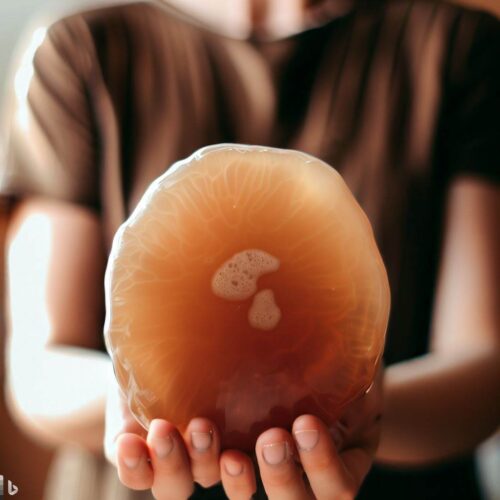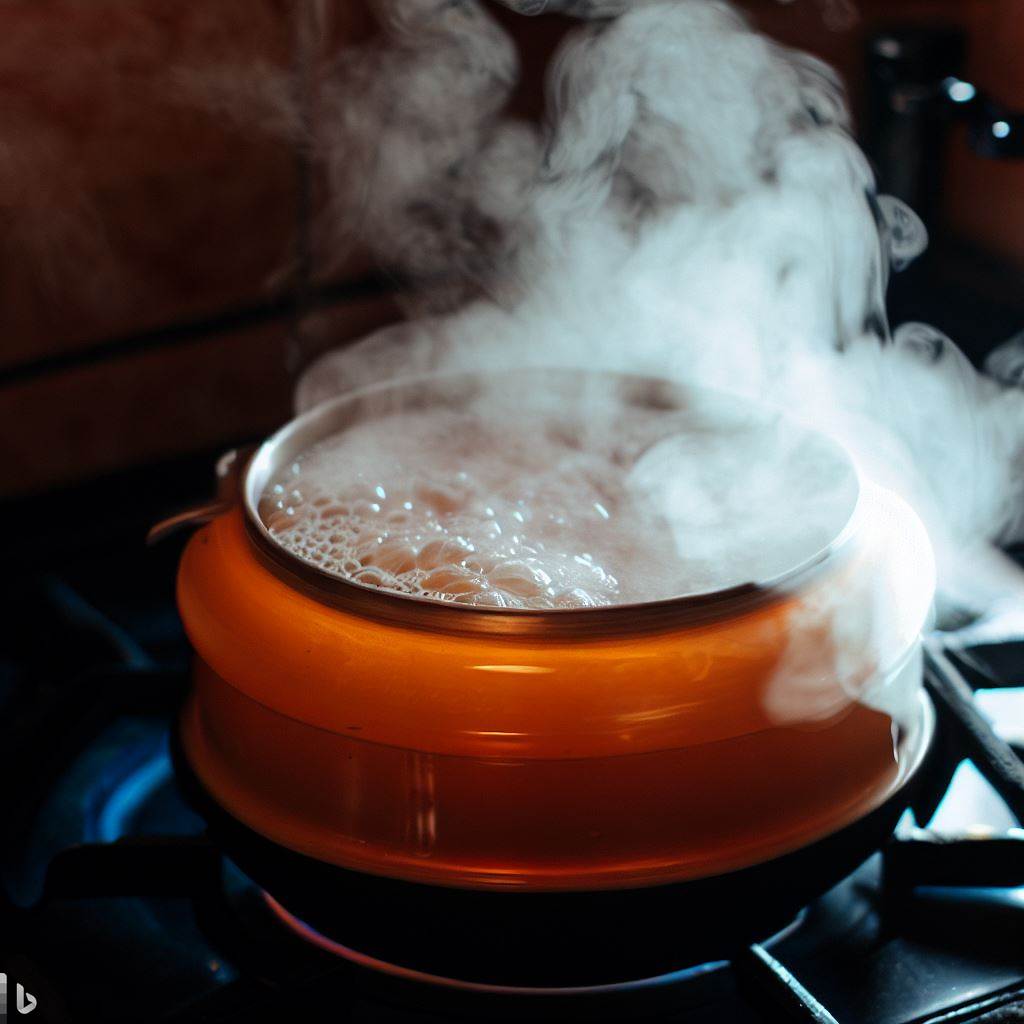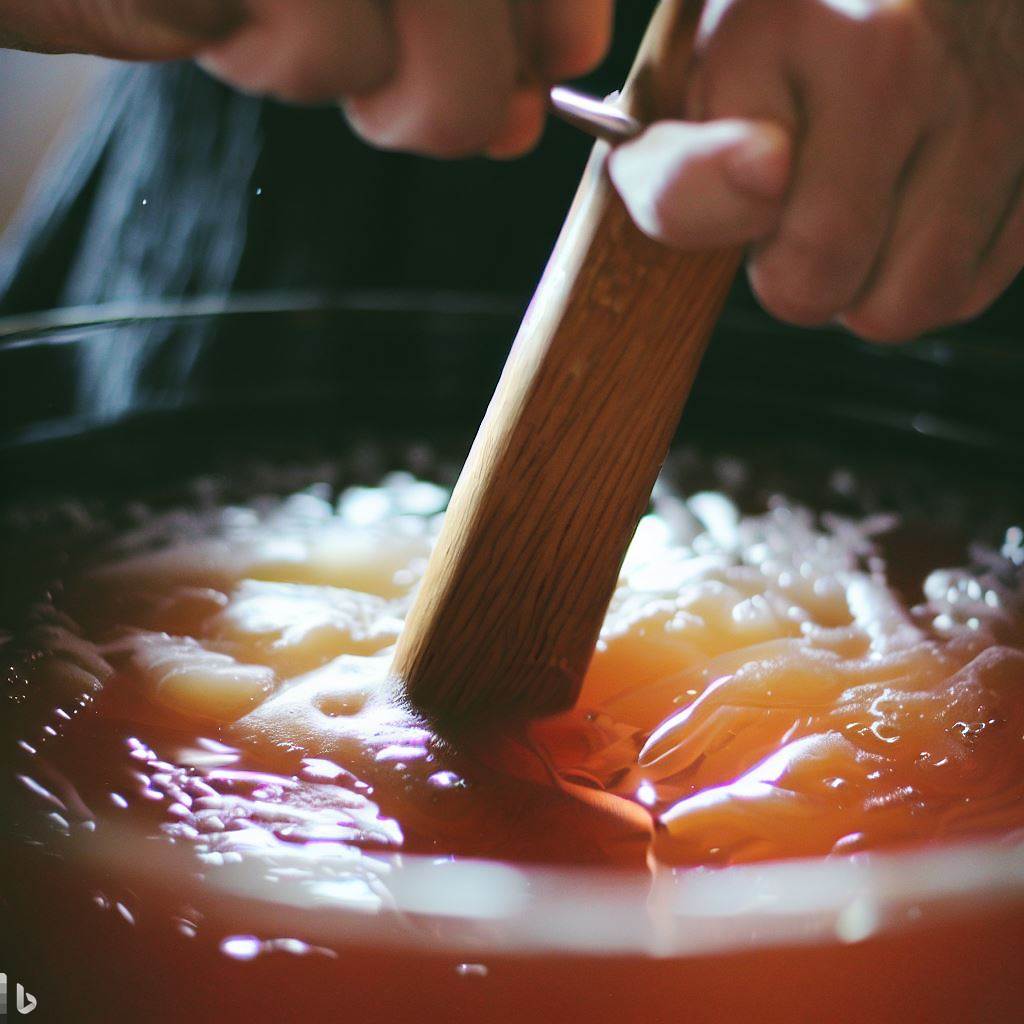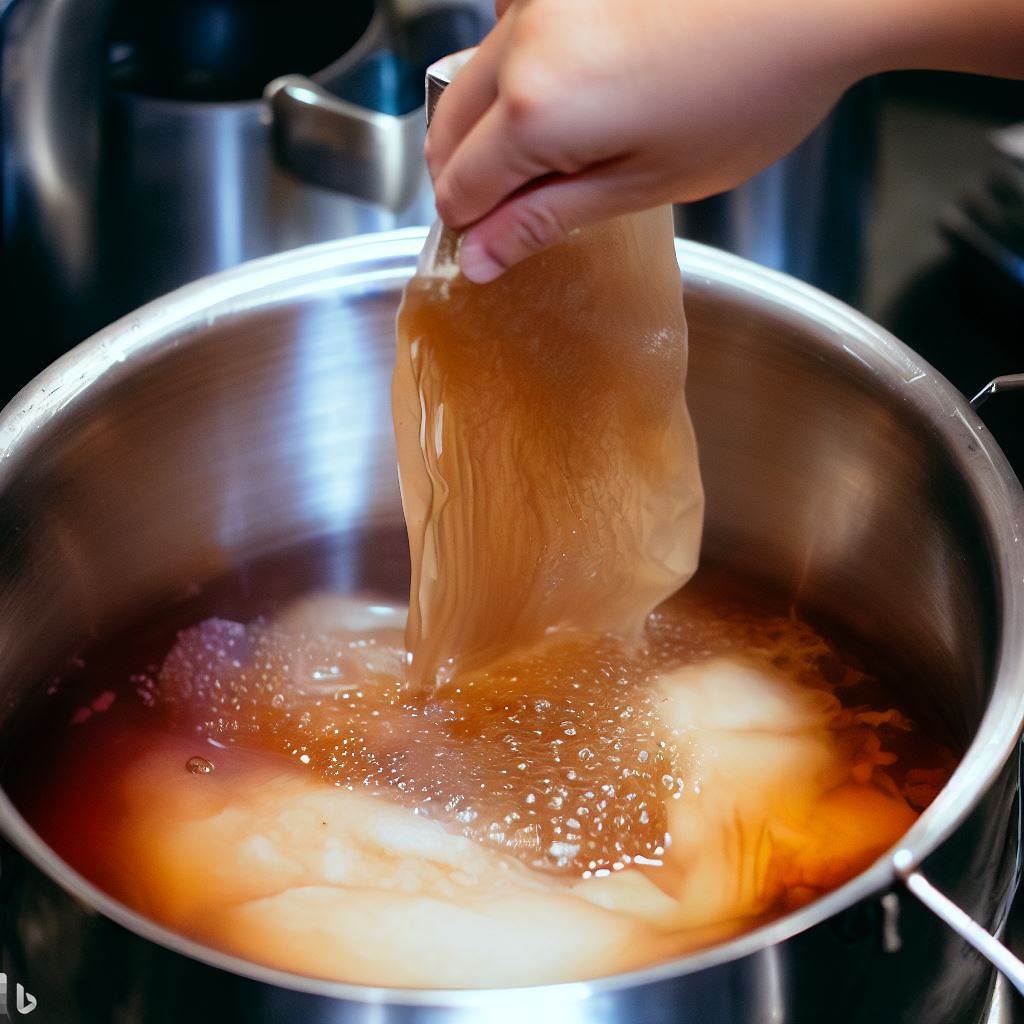- Introduction: What is a Kombucha Mother?
- Definition of Kombucha
- Brief explanation of the brewing process
- Introduction to the concept of a Kombucha SCOBY
- Understanding Kombucha Mother
- Definition and role of a Kombucha SCOBY
- Physical appearance and characteristics of a Kombucha mother
- Importance of a Kombucha SCOBY in the fermentation process
- Formation and Growth of a Kombucha Mother
- Overview of the fermentation process
- The role of bacteria and yeast in creating a Kombucha SCOBY
- Factors influencing the growth and formation of a Kombucha SCOBY
- Maintaining and Caring for a Kombucha Mother
- Proper storage and handling techniques
- Temperature and pH considerations
- Nutritional requirements for a healthy Kombucha SCOBY
- Using a Kombucha Mother to Brew Kombucha
- Step-by-step guide to brewing Kombucha using a Kombucha SCOBY
- Fermentation timeline and factors affecting taste
- Troubleshooting common issues during the brewing process
- Health Benefits of Kombucha
- Overview of the potential health benefits
- Antioxidant and probiotic properties
- Precautions and considerations for consuming Kombucha
- Conclusion
- Recap of key points discussed
- Encouragement for readers to try brewing booch with a mother culture
1. Introduction
To understand Kombucha fully, it’s important to delve into its brewing process, which involves a fascinating component known as a “Kombucha mother.” But What is a Kombucha Mother?
2. Understanding Kombucha Mother

What Is a Kombucha Mother? Unraveling the Secrets of the SCOBY
A kombucha mother, also called a SCOBY (Symbiotic Culture of Bacteria and Yeast), is a gelatinous disc-like structure that acts as the heart of the fermentation process. It consists of various beneficial bacteria and yeast strains, working together symbiotically to transform sweetened tea into Kombucha.
Physical Appearance and Characteristics of a Kombucha SCOBY
A Kombucha SCOBY typically appears as a thick, rubbery disc with a beige or brown coloration. It may have a few irregularities or stringy formations, which are signs of healthy microbial activity. Its size can vary from a few inches to a foot in diameter, depending on factors like age, brewing conditions, and the vessel used.
Importance of a Kombucha SCOBY in the Fermentation Process
The booch mother is essential for the fermentation of sweetened tea into Kombucha. It serves as a starter culture, providing the necessary bacteria and yeast to convert the sugars into organic acids, carbon dioxide, and trace amounts of alcohol. Without a Kombucha SCOBY, the fermentation process cannot take place.
3. Formation and Growth of a Kombucha Mother

Overview of the Fermentation Process
The formation of a Kombucha mother is a natural consequence of the fermentation process. When a batch of sweetened tea is inoculated with a starter culture, consisting of a Kombucha SCOBY and a small amount of already fermented Kombucha, the bacteria and yeast present in the starter culture begin to consume the sugar and multiply.
The Role of Bacteria and Yeast in Creating a Kombucha Mother
The bacteria and yeast strains in a Kombucha SCOBY work together to create a complex microbial community. The bacteria, primarily Acetobacter species, metabolize alcohol produced by the yeast and convert it into acetic acid. The yeast, usually Saccharomyces cerevisiae and other strains, consume the sugar and produce ethanol and carbon dioxide as byproducts.
Factors Influencing the Growth and Formation of a Kombucha Mother
Several factors affect the growth and formation of a Kombucha SCOBY. These include temperature, brewing vessel, pH levels, and the quality of ingredients used. Ideal conditions for a healthy Kombucha SCOBY involve a moderately warm environment, pH levels between 4 and 5, and proper hygiene practices to prevent contamination.
4. Maintaining and Caring for a Kombucha Mother

Proper Storage and Handling Techniques
To maintain a healthy Kombucha SCOBY, it is crucial to store it properly. The mother should be kept in a glass container, submerged in a small amount of Kombucha starter liquid, and covered with a breathable cloth or coffee filter to allow air exchange while preventing dust or insects from entering. It should be stored at room temperature away from direct sunlight.
Temperature and pH Considerations
The temperature of the brewing environment plays a significant role in the health and activity of the Kombucha mother. Ideally, the temperature should be kept between 75°F and 85°F (24°C and 29°C) for optimal fermentation. Additionally, monitoring the pH levels of the brewing tea is essential to maintain the acidity required for a healthy Kombucha SCOBY.
Nutritional Requirements for a Healthy Kombucha Mother
A Kombucha SCOBY requires a balanced diet of nutrients to thrive. It feeds on the sugar present in the sweetened tea, converting it into beneficial organic acids and trace amounts of alcohol. Providing a quality source of tea, preferably organic, and using unrefined sugars ensures that the Kombucha SCOBY receives the necessary nutrients for its growth and activity.
5. Using a Kombucha Mother to Brew Kombucha

Step-by-Step Guide to Brewing Kombucha Using a Kombucha Mother
- Gather the necessary ingredients and equipment, including tea, sugar, water, and a brewing vessel.
- Prepare a sweetened tea mixture and allow it to cool to room temperature.
- Add the booch mother and a small amount of already fermented Kombucha to the tea.
- Cover the vessel with a breathable cloth or coffee filter and secure it with a rubber band.
- Place the vessel in a suitable brewing location, away from direct sunlight and at the desired temperature.
- Allow the fermentation process to occur for 7 to 14 days, depending on personal taste preferences.
- Taste the Kombucha periodically to determine its readiness for consumption.
- Once the desired flavor is achieved, separate the booch mother from the newly brewed Kombucha and store it for future use.
Fermentation Timeline and Factors Affecting Taste
The fermentation timeline of Kombucha can vary depending on multiple factors, including temperature, brewing vessel, and personal preference. Generally, a fermentation period of 7 to 14 days is recommended. However, it’s important to note that warmer temperatures tend to speed up the fermentation process, resulting in a tangier taste, while cooler temperatures yield a milder flavor.
Troubleshooting Common Issues During the Brewing Process
Brewing Kombucha may encounter various challenges. Here are some common issues and possible solutions:
- Mold growth: Discard the entire batch and thoroughly clean the equipment to prevent contamination.
- Weak or slow fermentation: Check temperature and adjust if necessary. Ensure the booch mother is healthy andactive. Consider adding more sugar or starter liquid to boost fermentation.
- Vinegar-like taste: Shorten the fermentation period to avoid over-fermentation.
- Carbonation issues: Increase the brewing temperature or add extra sugar to encourage carbonation.
6. Health Benefits of Kombucha

Overview of the Potential Health Benefits
Kombucha has gained popularity due to its potential health benefits. While scientific research is ongoing, anecdotal evidence suggests that regular consumption of Kombucha may:
- Support digestive health
- Boost the immune system
- Provide antioxidant properties
- Aid detoxification
- Enhance mental well-being
Antioxidant and Probiotic Properties
Kombucha contains antioxidants and probiotics, which are beneficial for overall health. Antioxidants help combat oxidative stress and protect the body from harmful free radicals. Probiotics, on the other hand, promote a healthy gut microbiome and aid in digestion.
Precautions and Considerations for Consuming Kombucha
Although Kombucha offers potential health benefits, it’s essential to exercise caution and be aware of a few considerations:
- Alcohol content: Kombucha naturally contains trace amounts of alcohol due to the fermentation process. However, commercially available Kombucha is regulated to have alcohol levels below 0.5%.
- Sugar content: Kombucha is made from sweetened tea, so it contains sugar. However, during fermentation, the sugar is consumed by the booch mother, resulting in a lower sugar content compared to the initial mixture.
- Allergic reactions: Some individuals may be allergic to specific components of Kombucha, such as tea or the byproducts of fermentation. It’s advisable to start with small amounts and monitor for any adverse reactions.
7. Conclusion
In conclusion, a Kombucha mother, or SCOBY, is a vital component in the brewing process of the booch. Its presence ensures the fermentation of sweetened tea into a tangy, probiotic-rich beverage. By understanding the role and care of a Kombucha SCOBY, individuals can confidently brew their own Kombucha and enjoy its potential health benefits. Happy Brewing y’all!
FAQ – What is a Kombucha Mother?

- Can I make my own Kombucha mother?Yes, it is possible to make your own booch mother by allowing a batch of sweetened tea to ferment naturally. However, it’s more common and convenient to obtain a Kombucha mother from a reliable source or acquire one from a fellow Kombucha brewer.
- How long can a Kombucha mother be stored?A Kombucha mother can be stored for an extended period if properly cared for. When stored in a glass container with enough Kombucha starter liquid, a Kombucha mother can remain viable for several weeks or even months.
- Can I use a Kombucha mother for multiple brews?Yes, a booch mother can be reused for multiple brews. After each batch of Kombucha, separate the mother from the newly brewed Kombucha and store it in starter liquid for future use.
- What should I do if my Kombucha mother develops mold?If mold develops on a booch mother, it is crucial to discard the entire batch and take immediate action to prevent contamination. Thoroughly clean and sanitize the brewing equipment to ensure a fresh start. Moldy Kombucha should never be consumed, as it poses health risks.
- Are there any alternatives to using a Kombucha SCOBY?While the booch SCOBYis the traditional and most commonly used starter culture, there are alternative methods for brewing Kombucha. Some brewers opt for using commercially available Kombucha as a starter or even resort to using specific strains of kombucha yeast and bacteria purchased in isolated form.
Thanks for visiting Greek Mountain Kombucha on the blog post: What is a Kombucha Mother! We appreciate you visiting.







